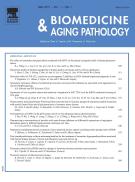Effects of physiological and biochemical factors based on aging, pathological conditions and drug combinations on propranolol pharmacokinetics using physiologically-based pharmacokinetic model in humans - 18/09/13
 , Akino Honbo, Katsumi Iga
, Akino Honbo, Katsumi IgaAbstract |
Sensitivity of physiological and biochemical parameters based on aging, pathological conditions and drug combinations on propranolol pharmacokinetics was investigated to define factors contributing to larger inter-individual variability on propranolol pharmacokinetics after oral administration than that after intravenous (iv) administration. Using a physiologically-based pharmacokinetic model, plasma propranolol concentration was simulated with wide-ranging physiological and biochemical parameters. Then calculated AUC and half-life (t1/2) were compared with those obtained from the basic condition. It was found that the total blood flow through the body (Qtot), hepatic volume, unbound fraction in the blood and metabolic parameters affected propranolol AUC. Except for Qtot, effects were greater with after oral administration than iv administration. The propranolol AUC decreased by half with a two-fold increase in hepatic volume after oral administration possibly because of the increased first-pass metabolism. By contrast, some distribution parameters such as the skin tissue-to-blood distribution ratio and blood-to-plasma concentration ratio affected propranolol t1/2. Finally, propranolol plasma concentrations were simulated in the case that metabolizing activity decreased to one half and one fifth with an assumption of metabolic enzyme inhibition. The simulated propranolol curves correlated well with the previously reported plasma concentration in the absence and presence of quinidine, which is well known to be a potent and selective CYP2D6 inhibitor. Thus, plasma propranolol pharmacokinetics was affected by parameters which related to the hepatic metabolism and the distribution, especially after oral administration.
Le texte complet de cet article est disponible en PDF.Keywords : Propranolol, Physiologically-based pharmacokinetic model, Human
Plan
Vol 3 - N° 3
P. 107-114 - juillet 2013 Retour au numéroBienvenue sur EM-consulte, la référence des professionnels de santé.
L’accès au texte intégral de cet article nécessite un abonnement.
Déjà abonné à cette revue ?

